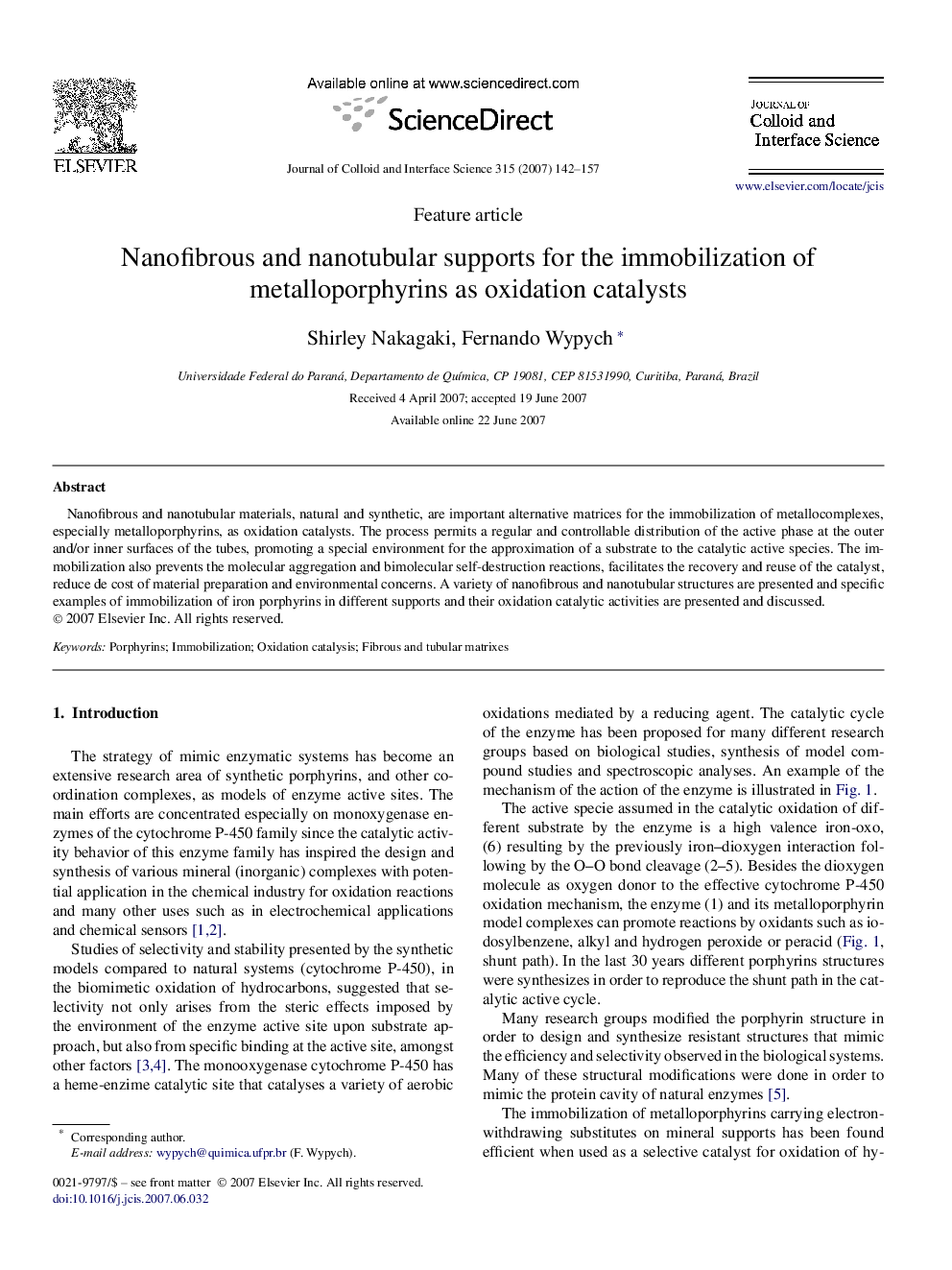| Article ID | Journal | Published Year | Pages | File Type |
|---|---|---|---|---|
| 612271 | Journal of Colloid and Interface Science | 2007 | 16 Pages |
Nanofibrous and nanotubular materials, natural and synthetic, are important alternative matrices for the immobilization of metallocomplexes, especially metalloporphyrins, as oxidation catalysts. The process permits a regular and controllable distribution of the active phase at the outer and/or inner surfaces of the tubes, promoting a special environment for the approximation of a substrate to the catalytic active species. The immobilization also prevents the molecular aggregation and bimolecular self-destruction reactions, facilitates the recovery and reuse of the catalyst, reduce de cost of material preparation and environmental concerns. A variety of nanofibrous and nanotubular structures are presented and specific examples of immobilization of iron porphyrins in different supports and their oxidation catalytic activities are presented and discussed.
Graphical abstractGrafting and immobilization of cationic and anionic porphyrins in zinc hydroxide nitrate (A) and a generic layered double hydroxides (B).Figure optionsDownload full-size imageDownload as PowerPoint slide
